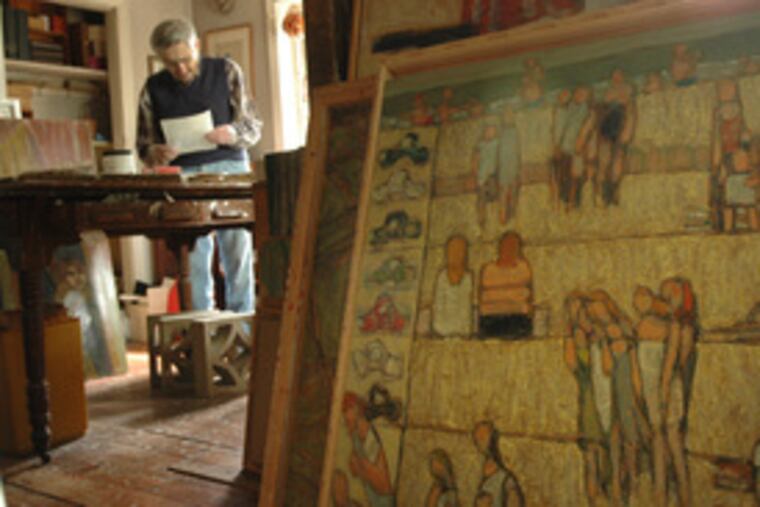Daniel Rubin | A living link to Barnes
It was a little disconcerting to find the man opening the door, a man who teaches students how to see, wearing an eye patch.

It was a little disconcerting to find the man opening the door, a man who teaches students how to see, wearing an eye patch.
More jarring was the way Harry Sefarbi - a Barnes Foundation instructor for more than 50 years - wore the thing, swung around on his forehead as though it were a unicorn horn. Or something covering a third eye.
"The doctor's not worried about it, so I'm not," he said. In four jerseys, pressed jeans and a pointed wool cap, he had the look of a favorite elf. If it's possible to have a twinkle in your voice, Harry Sefarbi does.
Sefarbi - sweet, canny link to the quirky, tyrannical Dr. Albert C. Barnes - is a month away from his 90th birthday. Despite his protestations, there's little evidence that he's slowing down.
The two met in 1947, when Sefarbi took the foundation's first-year course, taught by Barnes and his collaborator, Violette de Mazia. Three years later Sefarbi got a letter from the collector. Barnes wanted to buy a portrait Sefarbi had entered in a show at the Pennsylvania Academy of the Fine Arts.
Barnes paid Sefarbi $100 and hung the oil over a door in Room IX, among the Renoirs and Rousseaus. "Pretty fast company," Sefarbi says. It was one of Barnes' last purchases; he died a year later in a car crash.
Leading me up two flights of stairs into the studio of his Powelton Village twin, the artist says he's in "bit of a slump because of this eye business." Then he starts rummaging through sheets of Masonite, which he uses as canvas, to show some recent work.
Some slump
He brings forth a small oil he finished last week and calls
Homecoming
. It could be three sets of figures, couples returning from work, lovers sneaking off for assignations. Sefarbi is playing with color and ambiguity.
It's one of several paintings he's working on at once. "They never seem finished to me. When I see one hanging somewhere, I'd like to take a brush and change one little thing."
The attic is pungent with oils and wood carvings - he cuts his own frames. He points out another work in progress, based on his Polish grandparents - a big piece called Ancestors. It's a theme he wrestles with.
Many of his images are divided into panels, the influence of religious paintings and comic strips. Parting with his art brings more sorrow than sweetness.
"It's very hard to sell. Very hard. As soon as I sell something, Ruth says, 'That's the one I wanted.' "
Ruth, his wife of 52 years, accompanies him to his weekly Barnes lectures. The retired therapist tends to him, pinning a microphone to his lapel, sitting in the back by a portable amplifier, listening raptly.
Last Wednesday he was talking about Renoir, and he invited me to his class. He wanted to address why Barnes bought 181 of the artist's works.
Tradition is king
On the short walk into the foundation, Sefarbi packed a lot of detail. Leaning heavily on his plastic cane, he said he grew up in Chester, couldn't afford art school so he graduated from teachers college, made maps at the Battle of the Bulge, studied in France on the GI bill, and returned to the Barnes for good.
His students had assembled - six well-dressed men and women awaiting their lesson on the traditions of art.
Sefarbi teaches that biography, period and place are not as important as the qualities expressed on the canvas.
Michelle Osborn of Haverford was taking the course for the third time since 1959-60 because "each time Harry's different."
They were settling into folding chairs in a gallery flush with Renoirs, as Sefarbi continued. "People find it hard to see paintings. It's a new experience. . . . They come once on a bus and ask, 'Why so many Renoirs?' "
So, why?
"Well, because they're all different. Every 10 years Renoir is a different person."
We were moving to the next room when one of the students, a painter named Leonard Randolph, approached me.
His mother took Sefarbi's course nearly 50 years ago. Randolph is deep in his own quest.
"If you think you understand this," Randolph said of my short course in the Sefarbi method, "you're wrong."